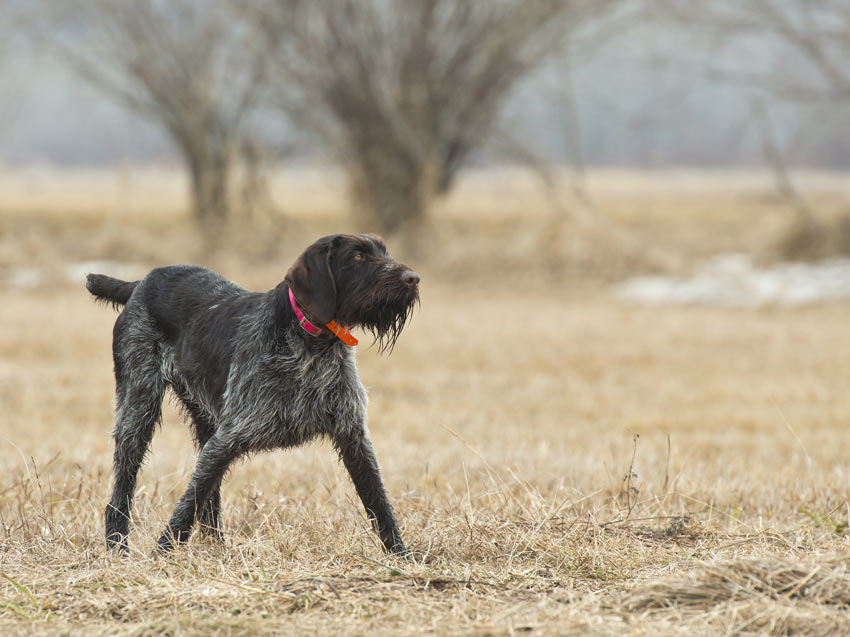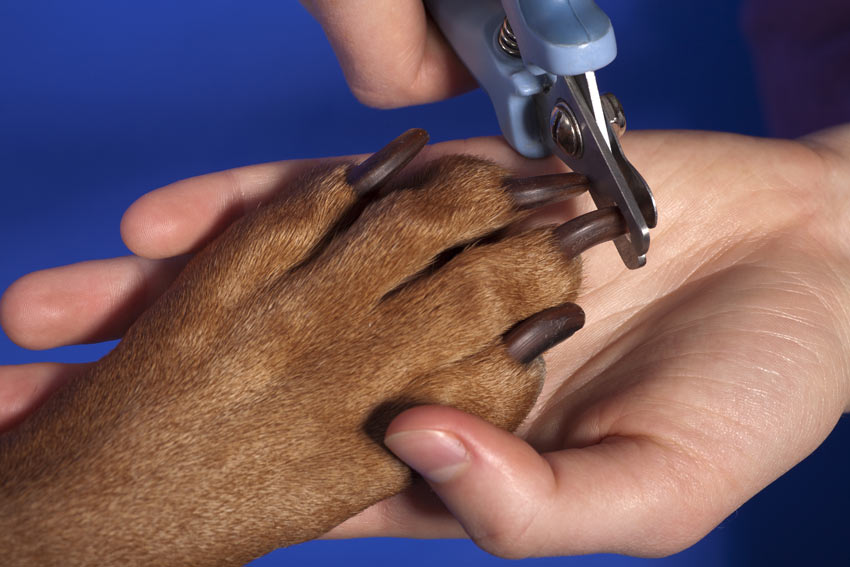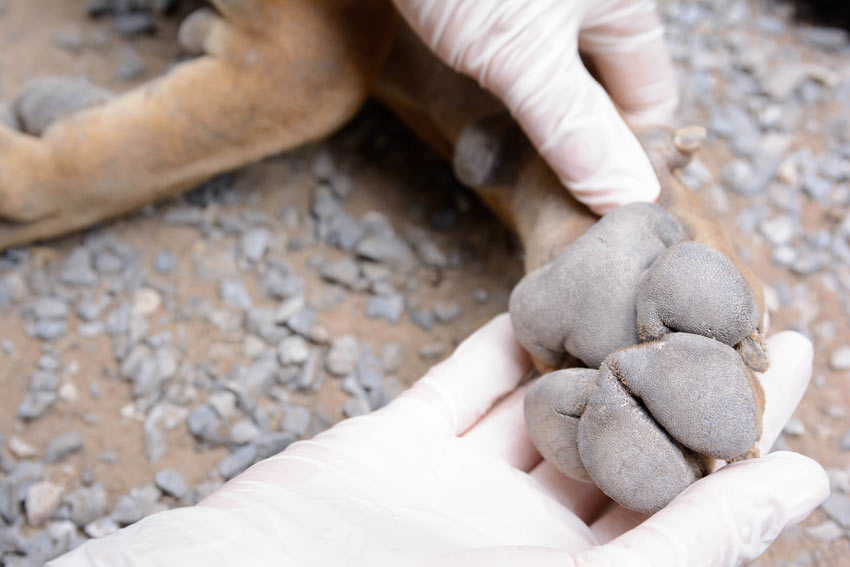Dogs paws are like all terrain tyres - they can handle all types of surfaces with ease. Plus there is often more to them than meets the eye. For example, did you know that some dogs have webbed paws? The Chesapeake Bay Retriever, the Field Spaniel, the German Wirehaired Pointer and the Portuguese Water Dog all have webbed paws, which is why they make fantastic swimmers.

A German Wirehaired Pointer that has webbed feet for swimming
Check that your dog has nothing trapped between the pads on his paws and make sure that his nails are not too long or split. If you exercise your dog on concrete or tarmac fairly often you might not need to trim them as they will be ground down naturally. If not, trim your dog’s nails to a comfortable length using a nail trimmer. If your dog’s nails get too long it can cause him to rock back onto his paws, which can lead to posture problems and further discomfort. You should also check for damage on the pads of the paws.

How to trim a dogs nails using a pair of dog nail pliers
If you notice your dog chewing, licking or biting his paws it could be for a number of different reasons. He might have stepped on something that has irritated the skin on his paw, he might have cut his paw, got something trapped in between the pads on his paw, or he might be showing typical symptoms of anxiety, stress or boredom. To prevent this behaviour, first check for signs of damage to the paw and try and relieve him of any pain if that is the cause, or redirect his attention with a toy as soon as he begins chewing, licking or biting to get him out of the habit.

Inspecting a dogs healthy paw
A swollen paw or limping usually indicates that your dog is in pain. Check the underside of the suspected paw, as well as in between his toes for any sign of damage or any debris that has become trapped. Also check for any puncture wounds or insect stings. If you cannot find anything wrong with your dog’s paw inspect his leg for a sprain or a possible break. If your dog continues to limp then you must contact your vet for a closer examination.






Comments
There are no comments just yet